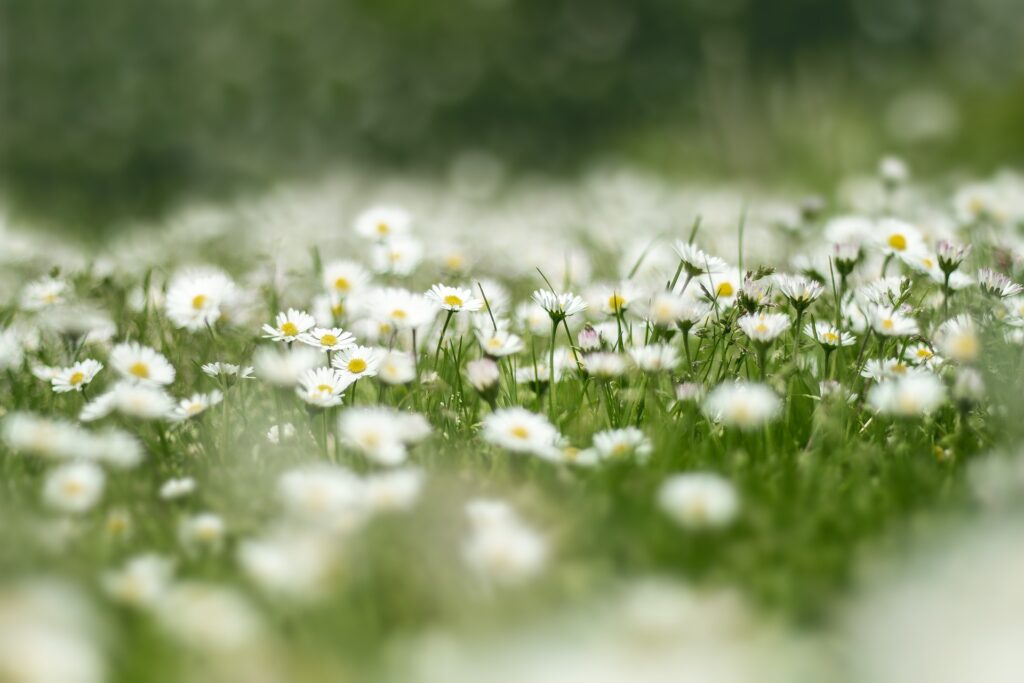Daisies are a popular garden flower known for their cheerful appearance and ease of care. With the right conditions, daisies can brighten up your garden with their beautiful blooms. Here’s a comprehensive guide on growing and caring for daisies.

Types of Daisies
Daisies come in various types, each with unique characteristics. Here are some common types:
| Type of Daisy | Characteristics |
|---|---|
| Shasta Daisy | Large white petals with yellow centers, blooms from early summer to fall. |
| Oxeye Daisy | Smaller than Shasta daisies, often found in wildflower gardens. |
| African Daisy | Vibrant colors like orange, pink, and purple, blooms best in full sun. |
| English Daisy | Small, dense flowers with a button-like center, often used in borders and lawns. |
Growing Season
Daisies typically bloom from late spring to early fall, depending on the variety and climate.
| Season | Activity |
|---|---|
| Spring | Plant new daisies, fertilize, start watering regularly. |
| Summer | Continue watering, deadhead spent blooms to encourage more flowers. |
| Fall | Light pruning, prepare for winter. |
| Winter | Minimal maintenance, protect from severe frost if necessary. |
Sunlight and Water Needs
Daisies thrive in full sun, requiring at least 6 hours of direct sunlight daily. They need regular watering but ensure the soil drains well to prevent root rot. Water deeply once a week, adjusting for weather conditions.
Soil Preferences
Daisies prefer well-drained, moderately fertile soil with a slightly acidic to neutral pH.
| Soil Type | pH Level | Characteristics |
|---|---|---|
| Clay Soil | 6.0-6.5 | Good moisture retention, needs good drainage. |
| Sandy Soil | 6.0-7.0 | Drains quickly, enrich with organic matter. |
| Loamy Soil | 6.0-7.0 | Rich in nutrients, ideal for most plants. |
Fertilization and Nutrients
Daisies benefit from light feeding. Use a balanced fertilizer in the spring and again in mid-summer to promote healthy growth and blooms.
| Season | Fertilization Type |
|---|---|
| Spring | Balanced NPK fertilizer (10-10-10). |
| Summer | Balanced NPK fertilizer (10-10-10) if growth is slow. |
| Fall | No fertilization needed, prepare for winter. |
Pruning and Maintenance
Regular maintenance helps keep daisies healthy and blooming. Deadhead spent flowers to encourage more blooms and trim back in late fall.
Additional Tips for Growing Daisies
- Mulching: Apply a layer of mulch around the base of your daisies to retain moisture and suppress weeds.
- Pest Control: Watch out for common pests like aphids and slugs. Use organic or chemical treatments as necessary.
- Winter Protection: In colder climates, protect daisies from frost by covering them with mulch or burlap.
Conclusion
Daisies are a delightful addition to any garden, offering bright, cheerful blooms with minimal care. From selecting the right type of daisy to ensuring proper sunlight, water, and soil conditions, each step is essential for growing beautiful daisies.